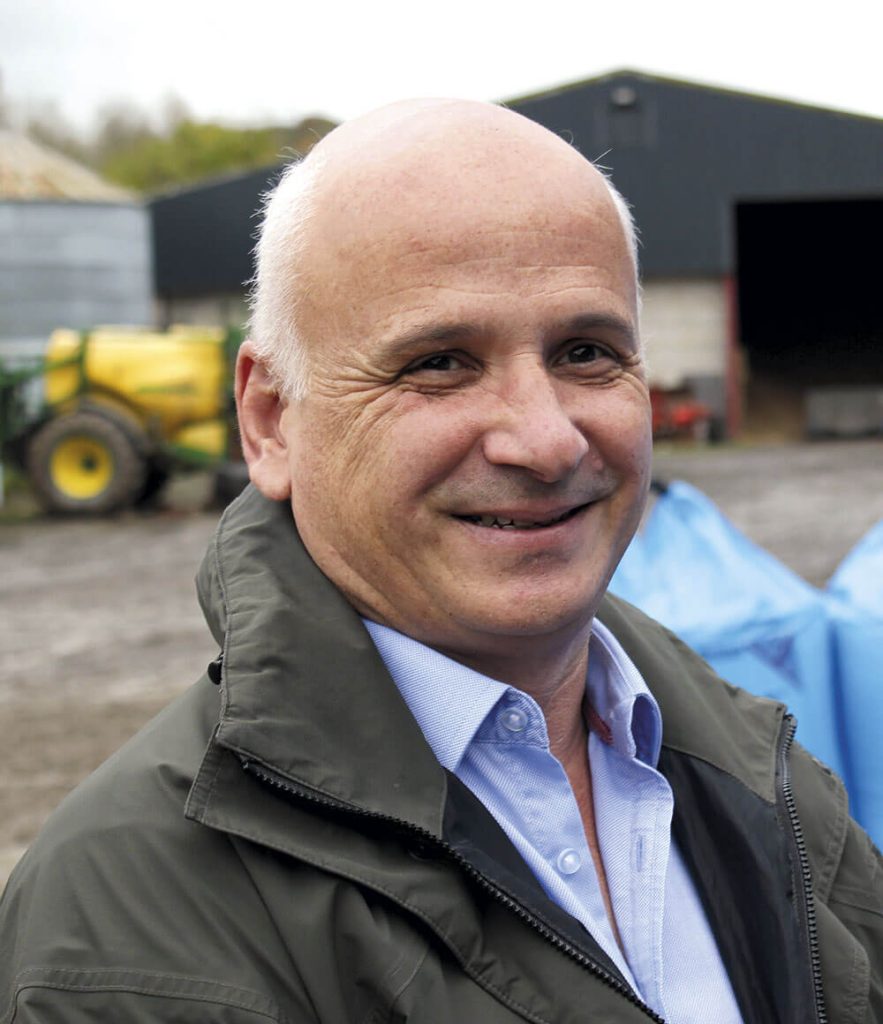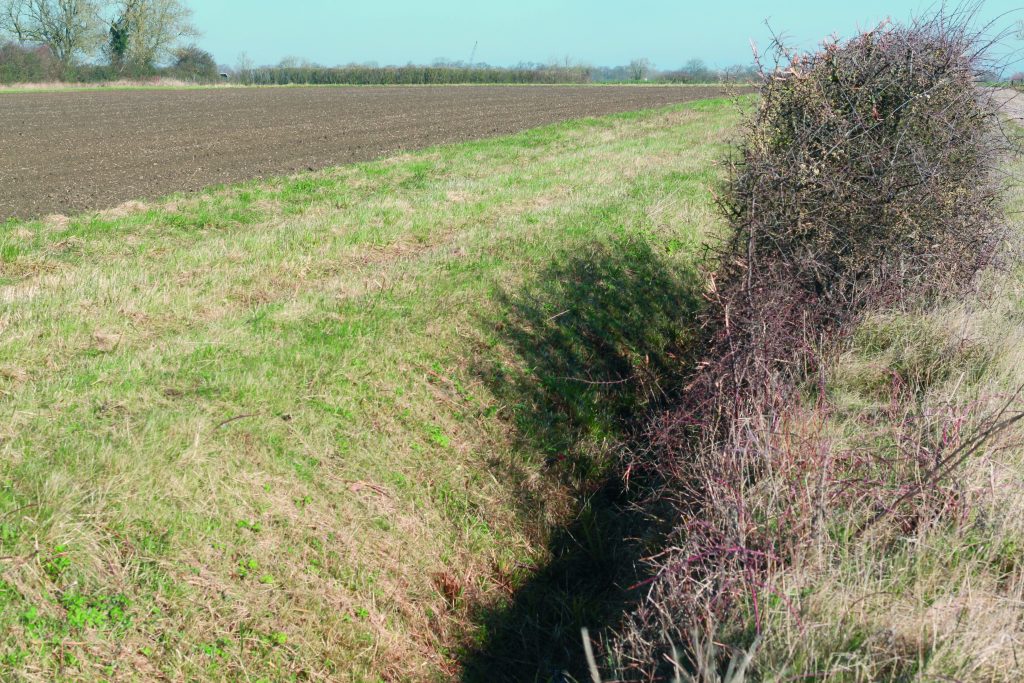
In the last Agrii Journal, we looked at how tackling the new 2023 Sustainable Farming Incentive (SFI) systematically involving a three-stage plan could make the task less daunting and more rewarding. In this issue, we get an insight into how it works on-farm.
Having pulled out of his SFI pilot on 214ha near Alcester in 2022, Warwickshire grower Paul Wilson has just entered all 755ha of G.W. Wilson & Sons’ owned and tenanted arable land and a small amount of permanent pasture into the 2023 SFI.
“Setting up the original pilot was time-consuming but not difficult, and the arable soils standard, in particular, suited us well,” he explains.
“But, in the end, we simply couldn’t justify taking out of production even the 5% of the land required by the Introductory Arable Land Standard for the payment available.
“At the same time, the scheme wasn’t compatible with the attractive carbon payments opportunity we were also exploring. So, we had to pull out.”
Working with Agrii SFI consultant Paul Pickford, Paul Wilson now believes the greater flexibility of the new scheme and the fact it can be run in parallel with carbon credits makes it a much more attractive option.
Adding all the farm’s 2023 SFI actions together, the team calculate that, after costs, they should be able to replace around 33% of their original Basic Payments Scheme income with their current plan.
Furthermore, soil carbon benchmarking over the past season suggests they are likely to virtually double this through their annual carbon payments.
“The first thing we did in building our 2023 plan was to include all the SFI actions we are already doing as a business for Red Tractor, Farming Rules for Water and the like,” Paul Wilson notes.
“This gave us a good soil, IPM, nutrient and hedgerow management base for our scheme. It has involved some extra work in places here, for instance, assessing and measuring all our hedgerows.
“But this has been a very useful exercise in itself, enabling us to identify additional field corners and rough areas suitable for other SFI actions as well as understanding our field boundaries in more detail than ever before.”
| SFI Action | Area |
|---|---|
| SAM 1: Soil management planning | All |
| SAM2: Multi-species winter cover crops | 40ha |
| HRW1: Hedgerow recording | All |
| HRW2: Hedgerow management | All |
| HRW3: Hedgerow tree management | All |
| IPM1: Integrated pest management planning | All |
| IPM3: Companion cropping | 120ha |
| IPM4: No insecticide use | 378ha |
| NUM1: Nutrient management review | All |
| NUM3: Legume fallow (three year) | 3.3ha |
| NUM3: Legume fallow (rotational) | 40ha |
| AHL2: Winter bird food | 5.3ha |
| AHL3: Grassy field corners and blocks | 12ha |
| AHL4: Buffer strips | 3.6ha |
| LIG1: Low input grassland | 17ha |
Additional actions
Going through current practices, the two Pauls then identified specific areas for additional actions.
“We have always grown just over 5ha of winter game cover, had a good amount of buffer strips, and found a surprising area of field corners and inconvenient areas that would be much better off down to grass than cropped,” Paul Wilson explains.
“We also had a small, very difficult field that lent itself ideally to a three-year NUM3 legume fallow. Going for a reasonable area of multi-species winter cover (SAM2), we can rotate around ahead of our peas or spring barley, which makes perfect sense for us, too.
“Cover cropping is something we’ve been doing anyway to improve our soils as well as protecting them, while providing some useful sheep grazing.
“The new SFI rules allow us to continue the grazing, and while the cover is supposed to be maintained through December, January and February, we are allowed to destroy it up to six weeks ahead of sowing a following crop, so it shouldn’t get in the way of any barley drilling.
“We have been experimenting with companion cropping for a while to try to help our OSR get away from flea beetle, so IPM3 was another logical element.”
Paul Pickford says there was some debate around the IPM4 no insecticide use action.
“Paul gave up spraying beans for bruchids years ago, has virtually given up doing so for CSFB and doesn’t generally have serious problems with BYDV. But for flexibility and safety – just in case – we opted to commit only half the arable area.
“After all, within the three-year SFI agreement, we are able to increase the area to 100% or cut down by 50% in the following years. So, it’s worth not over-committing to start with.
“The same applies to the rotational area of NUM3 legume fallow we’ve put into our plan. This fits in nicely as an extra break in place of beans or oilseed rape, taking the pressure off OSR establishment in a difficult year and giving a great entry for milling wheat.
“It means a fair level of income foregone from this area, but it should deliver a decent gross margin of around £480/ha while giving Paul the flexibility to drill it in the spring, having sprayed off an overwintered stubble or cover crop to help with black-grass management.”
Carbon payments are increasingly important
Even though it will only recover a third of their original BPS entitlement, Paul Wilson and Paul Pickford see the 2023 scheme as an important opportunity they need to seize in the post-BPS world, with carbon payments increasingly important.
“It’s early days yet, but our initial benchmarking with a sophisticated carbon certification system across 181ha of ground in very good condition here at Larkstoke Farm shows our regime is sequestering an average of 5.04 t/ha of CO2 eq. annually,” says Paul Wilson.
“Based on current carbon certificate rates, it would have earned us a payment of £130/ha: £104/ha paid in the following year with £26/ha held over for the future as a ‘loyalty bonus’.
“While all our ground isn’t capable of delivering such a good sequestration performance, we are conservatively budgeting for a return of over £60/ha (before bonus) from the 755ha we currently have in the scheme for payment in 2024 once all the auditing is completed on our 2023 season.
“This looks like matching the return we will get from SFI, putting us in a far better place overall.”
Paul Pickford adds with carbon credits already generating an average annual payment of £55/ha for the UK farms involved they are a particularly exciting opportunity.
It is an annual scheme, paying us for what we actually achieve each year through a well-validated process generating carbon credits that are only sold to food and fibre producers, so we are not providing off-setting excuses for other industries.
“As BPS disappears, everyone will have to look to these and other opportunities to diversify their income alongside what the Government is prepared to pay for ‘public goods’.
“At the same time, of course, I invariably find most farms have considerable capacity to improve their finances through restructuring their capital expenditure, more than anything else.
“In everything we do, though, I have no doubt that careful planning and the greatest possible flexibility will be the primary requirements – not least with the extent to which both our climate and markets are changing.
“In this respect, I see the new SFI scheme offering something for every farm and carbon ‘insetting’ programmes like the one we are involved with working well alongside it.”
| The Agrii 3-step SFI process |
|---|
| Stage 1 – focus on the easy wins |
| Stage 2 – take advantage of the obvious areas |
| Stage 3 – time to do some homework |




